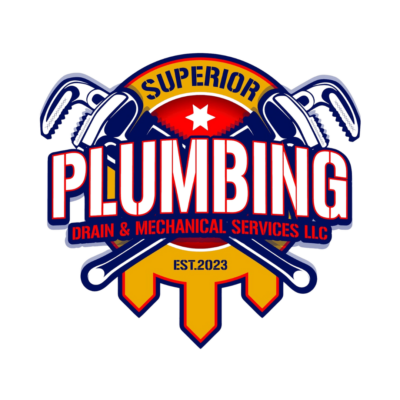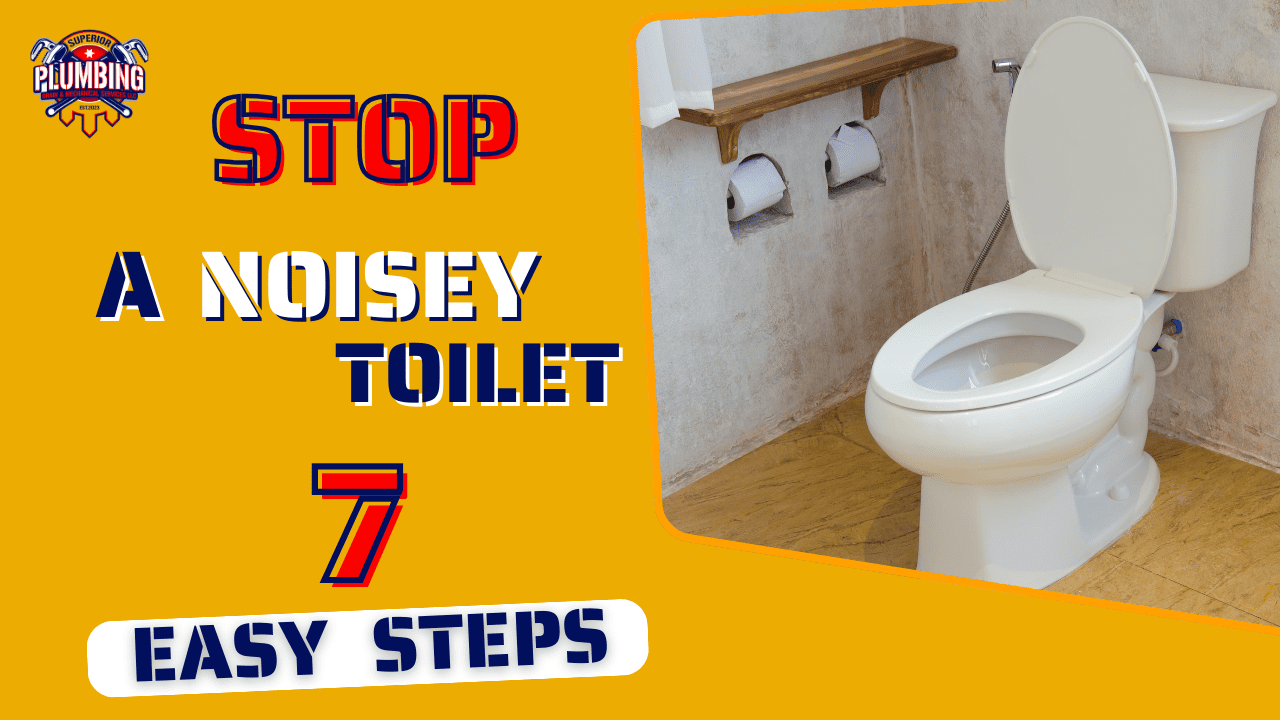Key Takeaways
- Identify the Root Cause: To effectively resolve the whistling noise, accurately diagnose the underlying issue. Common culprits include a damaged flapper valve, faulty fill valve, mineral deposits, or air leaks.
- Troubleshooting: Many whistling toilet problems can be addressed with simple fixes, such as adjusting the water level, cleaning the flapper valve, or tightening connections.
- Seek Professional Help from Superior Plumbing: If your attempts fail to resolve the issue or you’d prefer to save time and hassle, contact Superior Plumbing. Our experts have the tools and knowledge to diagnose and fix any and all plumbing problems.
Is your toilet serenading you with an unwanted whistle? This high-pitched tune can be both irritating and embarrassing. Fortunately, you can fix most whistling toilet issues easily. In this blog post, we’ll guide you through the steps regarding how to fix a whistling toilet in your home.
These steps will help you identify and fix the source of your toilet’s whistle. But if you’re short on time or prefer to leave the job to a professional, Superior Plumbing of Tulsa is here to save the day. Let us handle the problem while you enjoy a peaceful and quiet bathroom.
Step 1: Check the Water Level
The first step in troubleshooting a whistling toilet is to check the water level in the tank. After you flush the toilet, observe the water level as the toilet tank refills.
If it’s too high, the float valve may be stuck, causing excess water to enter the tank. An overflowing toilet is an indication of this issue. Adjust the float valve downward to lower the water level.
On the other hand, if the water level is too low, the float valve might not be rising high enough. Adjust the float valve upward to increase the water level in the tank. By ensuring the water level is at the correct height, you can often eliminate whistling noises caused by improper water flow.
Step 2: Examine the Flapper Valve
The flapper valve plays a crucial role in preventing water leaks and ensuring proper toilet function. This rubber or plastic disc seals the tank when the toilet is not in use.
Carefully inspect the flapper valve for any signs of wear, tear, or mineral deposits. If the flapper valve is damaged or not sealing properly, it may be the source of the whistling sound. Replacing the flapper valve is a relatively simple DIY task that can often resolve the issue.
Step 3: Check the Fill Valve
The fill valve is another essential component that regulates the water level in the toilet tank. If the fill valve is damaged or malfunctioning, it can cause water to flow into the tank at an irregular rate, leading to whistling noises. Carefully inspect the fill valve for any signs of leaks or damage. If you find any issues, replacing the fill valve is often the solution to the whistling problem.
Step 4: Inspect the Tank Chain
The tank chain, a vital component in the flushing mechanism, connects the flapper valve to the flush handle. If the chain is too long or tangled, it can interfere with the proper functioning of the flapper valve, leading to whistling noises. Inspect the chain for any issues and ensure it is the correct length. If necessary, adjust the chain or replace it with a new one to restore the toilet’s proper operation.
Step 5: Check for Mineral Deposits
Mineral deposits can be a common culprit behind a soft whistle. These deposits can build up on the flapper valve, preventing it from sealing properly and allowing water to leak into the bowl. To address this issue, gently clean the flapper valve with a soft brush and white vinegar. This solution can help dissolve mineral deposits and restore the flapper valve’s functionality, eliminating the whistling noise.
Step 6: Check for Air Leaks
Air leaks can also contribute to whistling toilet noises. Carefully inspect the base of the toilet and the connections between the toilet and the water supply valve for any signs of leaks. If you find a leak, tighten the connections or replace any damaged gaskets. By addressing air leaks, you can help eliminate the whistling and restore the toilet’s proper function.
Step 7: Get Professional Assistance
If you’ve tried the steps outlined above and your toilet is still whistling, it’s time to call in a professional plumber. Superior Plumbing has the tools and expertise to diagnose and fix all plumbing issues. DIY troubleshooting is time consuming and often yields little to no results.
Our technicians can identify and address underlying problems quickly. We’ll find the root cause of your toilet’s whistling, such as damaged pipes or internal components.
We are skilled at fixing any issue related to your plumbing system.
Don’t let a whistling toilet disrupt your peace and quiet any longer. Contact Superior Plumbing for a quick and efficient solution.
Frequently Asked Questions
Why is my toilet making a high-pitched whistling sound?
A whistling toilet can be caused by several factors, including a damaged flapper valve, a faulty fill valve, a clogged drain, or mineral deposits. It’s important to address this issue promptly to prevent further problems and avoid water waste.
What happens if you don’t fix a whistling toilet?
If left unaddressed, a whistling toilet can lead to increased water bills, as water may be constantly running. Additionally, it can cause damage to the toilet itself or surrounding fixtures. In some cases, a whistling toilet may be a sign of a more serious plumbing issue, such as a partial blockage or a leak.
How to stop a toilet from whistling?
To stop a whistling toilet, you can try troubleshooting the issue yourself by checking the water level, flapper valve, fill valve, and tank chain. If you’re unable to resolve the problem, contact Superior Plumbing. We offer professional toilet repair and replacement if necessary.
What does a clogged toilet sound like?
A toilet clog often produces a gurgling or bubbling sound when flushed. It may also fail to flush properly or overflow. If you’re experiencing these symptoms, it’s important to address the clog promptly to avoid further damage and unpleasant odors.
Toilet Repair Services in Tulsa
A whistling toilet can be a frustrating and embarrassing problem, but with a little troubleshooting or professional assistance, you can restore peace and quiet to your bathroom.
By following the steps outlined in this blog and consulting with Superior Plumbing, you’ll be well on your way to eliminating the whistling noise and ensuring your toilet functions properly.
Remember, addressing toilet issues promptly can help you save money on water bills and prevent potential water damage. So, don’t let a whistling toilet disrupt your daily life any longer. Our team of season pros are available 24/7. Schedule your toilet repair services online today.


Leave a Reply